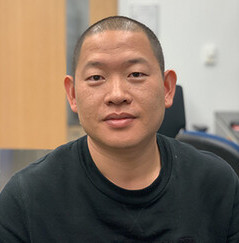Academic Staff

Professor WANG, Shoutang 王守堂
- BS (Jilin Agricultural U), MS (Jilin U), PhD (U of Paris-Saclay)
- Assistant Professor
- Microglia and neurodegenerative diseases
- Immunotherapy and translational medicine
- Cell signaling
Dr. WANG completed his PhD work at Institute Gustave-Roussy, France, where he was trained in the developmental hematopoiesis of myeloid lineage. After received his PhD degree in 2017, he joined in Prof. Marco Colonna’s lab at Washington University School of Medicine in St. Louis, USA. In Colonna lab, he contributed to multiple projects that aided him in investigating the role of the functions of TREM2 in microglia in the mouse model of Alzheimer’s disease. Following his postdoctoral training, he joined School of Biomedical Sciences, the University of Hong Kong, to establish his own laboratory in 2023. His lab is particularly interested in learning how the immune system interacts with the central nervous system during neurodegenerative diseases, such as Alzheimer’s disease and how this interplay influences the development and progression of the diseases, attempting to understand the underlying cause of disease and explore the potential treatments.
The involvement of microglia in the occurrence and progression of neurodegenerative diseases is receiving an increasing attention in the recent years. Consequently, microglia are considered as a potential target for therapeutic approaches to these disorders, such as Alzheimer's disease. A systems-level understanding of functions of microglia in the microenvironment of pathology conditions as well as normal ageing process will bring developmental principles for novel therapeutic approaches.
The overall goal of our lab is to contribute a cellular and molecular mechanisms research program that enables highly collaborative biochemical/genetic-engineering approaches to developing novel treatment methods for neurodegenerative diseases.
Our lab will pursue this goal by 1) developing more precise animal model of neurodegenerative diseases and imaging methods to study microglia and its interactions with other immune/glia cells in the central nervous system; 2) examining the therapeutic potential of targeting immune system-derived factors that modulate brain pathology; 3) understanding the signaling pathway by which the key molecules regulate the functions of microglia in detail.
Perspectives & Commentaries
- Wang, S.*, #, and Colonna, M. (2023). The microglial immunoreceptor tyrosine‐based motif‐Syk signaling pathway is a promising target of immunotherapy for Alzheimer’s disease. Clin. Transl. Med. 13, 10–13. *First author, #Corresponding author.
Peer-Reviewed Methodology & Review Articles
- Wang, S., and Colonna, M. (2019). Microglia in Alzheimer’s disease: A target for immunotherapy. J. Leukoc. Biol. 106, JLB.MR0818-319R.
Peer-Reviewed Research Articles
- Wang, S., Sudan, R., Peng, V., Zhou, Y., Du, S., Yuede, C.M., Lei, T., Hou, J., Cai, Z., Cella, M., et al. (2022). TREM2 drives microglia response to amyloid-β via SYK-dependent and -independent pathways. Cell 185, 4153-4169.e19.
- Wang, S.*, Ren, D.*, Arkoun, B., Kaushik, A.-L., Matherat, G., Lécluse, Y., Filipp, D., Vainchenker, W., Raslova, H., Plo, I., et al. (2021). Lyl-1 regulates primitive macrophages and microglia development. Commun. Biol. 4, 1382. *Co-first author.
- Ellwanger, D.C.*, Wang, S.*, Brioschi, S., Shao, Z., Green, L., Case, R., Yoo, D., Weishuhn, D., Rathanaswami, P., Bradley, J., et al. (2021). Prior activation state shapes the microglia response to antihuman TREM2 in a mouse model of Alzheimer’s disease. Proc. Natl. Acad. Sci. 118, 1–12. *Co-first author.
- Wang, S.*, Mustafa, M.*, Yuede, C.M., Salazar, S.V., Kong, P., Long, H., Ward, M., Siddiqui, O., Paul, R., Gilfillan, S., et al. (2020). Anti-human TREM2 induces microglia proliferation and reduces pathology in an Alzheimer’s disease model. J. Exp. Med. 217. *Co-first author.
- 2017 Keystone Symposia Future of Science Fund scholarship, US
Last update: September 1, 2023
